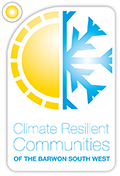Overview of Natural Assets
The region is renowned for its scenic beauty, dramatic coastline, rich biodiversity and agricultural production. It covers over 40,000 sq km, extending from Ballarat in the east to the South Australian border in the west, and from Geelong on the southern coast of Victoria to the township of Nelson in the west. There are eight basins that occur within the region: Moorabool, Barwon, Lake Corangamite, Otway Coast, Glenelg, Hopkins, Portland Coast and Millicent Coast.
The boundaries of the region include marine and coastal waters out to the state limit of three nautical miles. Its landscape is geographically diverse with spectacular coasts, vast volcanic plains, the rugged mountain ranges of the Grampians and the soaring old growth forests of the Otways. The region contains an abundance of lakes and wetlands with some being of national and international significance..jpg)
The region contains a number of natural features that are of national and international significance, including:
- Lake Corangamite, the largest permanent saline lake in Australia and the largest natural lake in Victoria, which is a Ramsar listed wetland and a haven for migratory and non-migratory birds
- Expansive volcanic plains with breached scoria cones, extensive wetlands and threatened grasslands, and the unique landscape of the stony rises with their diverse woodlands, wetlands and rock formations
- A range of coastal environments including sandy beaches, rocky headlands, estuaries and bays, and the cliffs, caves and sea stacks of the Shipwreck Coast
- The Otway Ranges with deeply incised rivers, gorges, rapids and waterfalls and extensive forests
- Parks and reserves, including the Port Campbell and Great Otway National Parks, the Twelve Apostles and Point Addis Marine National Parks and part of the Brisbane Ranges National Park
- Widespread, diverse and productive landscapes, supporting production forests, cropping, grazing, horticulture, viticulture and dairy enterprises
- Rivers and waterways including internationally significant wetlands, underpinning water supplies to towns and cities
- Budj Bim National Heritage Landscape (Mt Eccles/Lake Condah/Tyrendarra Area)
- Grampians (Gariwerd) National Park (listed on National Heritage Register)
- Kanawinka Geopark (UNESCO listed), encompassing sites of geologic significance such as Wannon Falls, Tower Hill, Mt Noorat and Princess Margaret Rose Caves
- Glenelg River – the lower section of the Glenelg River is one of 18 heritage river areas in Victoria
- Western District Ramsar lakes – one lake (Lake Bookar) in the region is recognised as internationally important under the Ramsar Convention on Wetlands
- Three Important Bird Areas (IBA) (sites of global bird conservation importance) – Yambuk Lakes Complex IBA, Port Fairy to Warrnambool IBA and Discovery Bay – Piccaninnie Ponds IBA
- Significant areas of two of 15 recognised Australian Government ‘biodiversity hotspots’ (Victorian Volcanic Plain, South Australia’s South-east/Victoria’s South-west)
- 13 endangered Ecological Vegetation Communities
- 94 federally listed species
- The iconic Red-tailed Black Cockatoo, Striped Legless Lizard, Orange-bellied Parrot, Growling Grass Frog, and endemic Glenelg Spiny Cray








